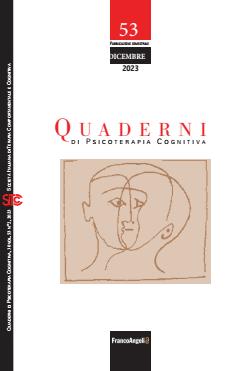
LIBRI DI ONNO VAN DER HART


Trauma, dissociazione e nuovi contesti per la psicoanalisi
Riscoprire Pierre Janet esplora l’eredità lasciata dallo psicologo, filosofo e psicoterapeuta francese (1859-1947), dalla relazione tra Janet e Freud all’influenza della sua teoria della dissociazione sulla psicotraumatologia contemporanea.
cod. 1422.47

Some World War I clinicians related the symptoms of traumatized servicemen to an underlying dissociation of their personality, consisting of two prototypical conditions: one involving functioning in daily life (inspired by Myers, whose work is also discussed in this article, and which will be labeled apparently normal part of the personality [ANP]) and one involving fixation in the traumatic experience and related attempts at defense (emotional part of the personality [EP]). These authors described two dissociative patterns. As illustrated in this article, one pattern consisted in the presentation of a dominant ANP suffering from constant or frequent intrusions from EP. The other pattern consisted in repeated complete alternations between ANP and EP. Instead of the use of purely symptom-oriented approaches, for the dissociative symptoms to be really resolved, an integration of traumatic memory in the personality, that is, between EP and ANP had to take place. These clinicians used hypnosis to access the traumatic memory and EP and to foster such integration; they agreed on the importance of the quality of the therapeutic relationship in this regard. However, they differed in opinion and practice as to the need to assists patients in their expression of traumatic emotions during this process. When the trauma was related merely to war experiences, such therapeutic processes took place within a simple phase-oriented treatment model, while in the presence of a history of previous trauma and related dissociation of the personality, this model had more complex applications. This is similar to modern treatment approaches of the sequelae - such as a complex dissociative disorder - of chronic (childhood) traumatization.

In the last two centuries, clinical interest in the phenomenon of trauma-related dissociation has waxed and waned. From the time of Pierre Janet, various concepts have been proposed to describe this dissociation. Other concepts proposing psychological divisions as part of normal personality have also been applied to trauma-related dissociation. Taking trauma-related dissociation as a point of departure, this paper examines the various constructs used to denote normal or pathological subsystems of the personality as to their validity in explaining the divisions occurring within an individual following traumatizing experiences. A number of constructs, falling within the overarching categories of ‘states’, ‘personalities’, and ‘complexes’ are considered. Each is discussed in terms of its strength and weaknesses using, among other things, Pierre Janet’s hierarchy of degrees of reality as a yardstick. In contrast to these historical constructs, each with its limitations, the contemporary theory of Structural Dissociation of the Personality proposes an optimal concept for describing ‘trauma-related dissociation’.

Nel DSM-IV l’amnesia dissociativa è considerata un’entità clinica distinta che può prendere le seguenti forme: amnesia localizzata, amnesia continua, amnesia sistematizzata, amnesia generalizzata e amnesia selettiva. In ambito clinico, tuttavia, essa è più comunemente presente come espressione sintomatica di disturbi più complessi ed estesi, soprattutto i disturbi dissociativi complessi (e spesso in pazienti che hanno subito traumi acuti e cronici). La dissociazione è il risultato di un’integrazione difettosa, che di solito si produce in occasione di esperienze traumatiche, di quei sistemi neuro-bio-psicologici dalla struttura estremamente complessa costituita dalla personalità. Questo difetto comporta una dissociazione della personalità in due o più parti scisse - sottosistemi dinamici e attivi, ma rigidi e relativamente chiusi. In base a questo approccio concettuale, alcune di queste parti dissociate possono contenere ricordi traumatici che, se riattivati, riscatenano certi vissuti e certe messe in atto; nel contempo, il resto della personalità rimane relativamente intatto, preso dalla vita quotidiana, in un atteggiamento fobico nei confronti delle parti implicate nei ricordi traumatici. Quindi, la dissociazione è mantenuta da una serie di fobie che nel corso del trattamento necessitano di una particolare attenzione. La cura prevista è un trattamento mirato alla fase, preceduto da un’indagine neurologica completa e dall’impiego di procedure diagnostiche standardizzate, nonché dalle scale per i disturbi dissociativi. Il difficile processo di esplorazione dei ricordi traumatici e della loro integrazione con gli altri aspetti della personalità richiede una sufficiente capacità integrativa nel paziente. Quindi, lo scopo iniziale non è la risoluzione rapida (e forzata) dell’amnesia, ma viceversa l’instaurarsi di una senso di sicurezza e di stabilità nella vita quotidiana e nella terapia.